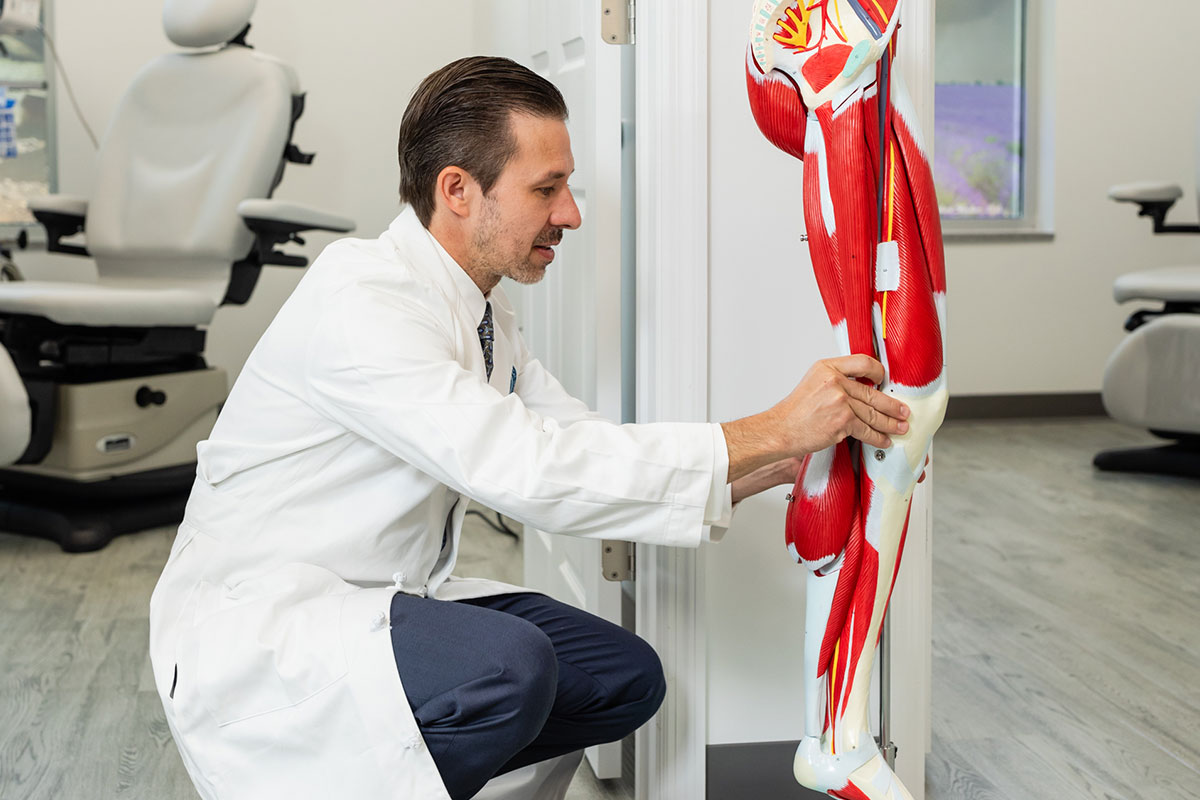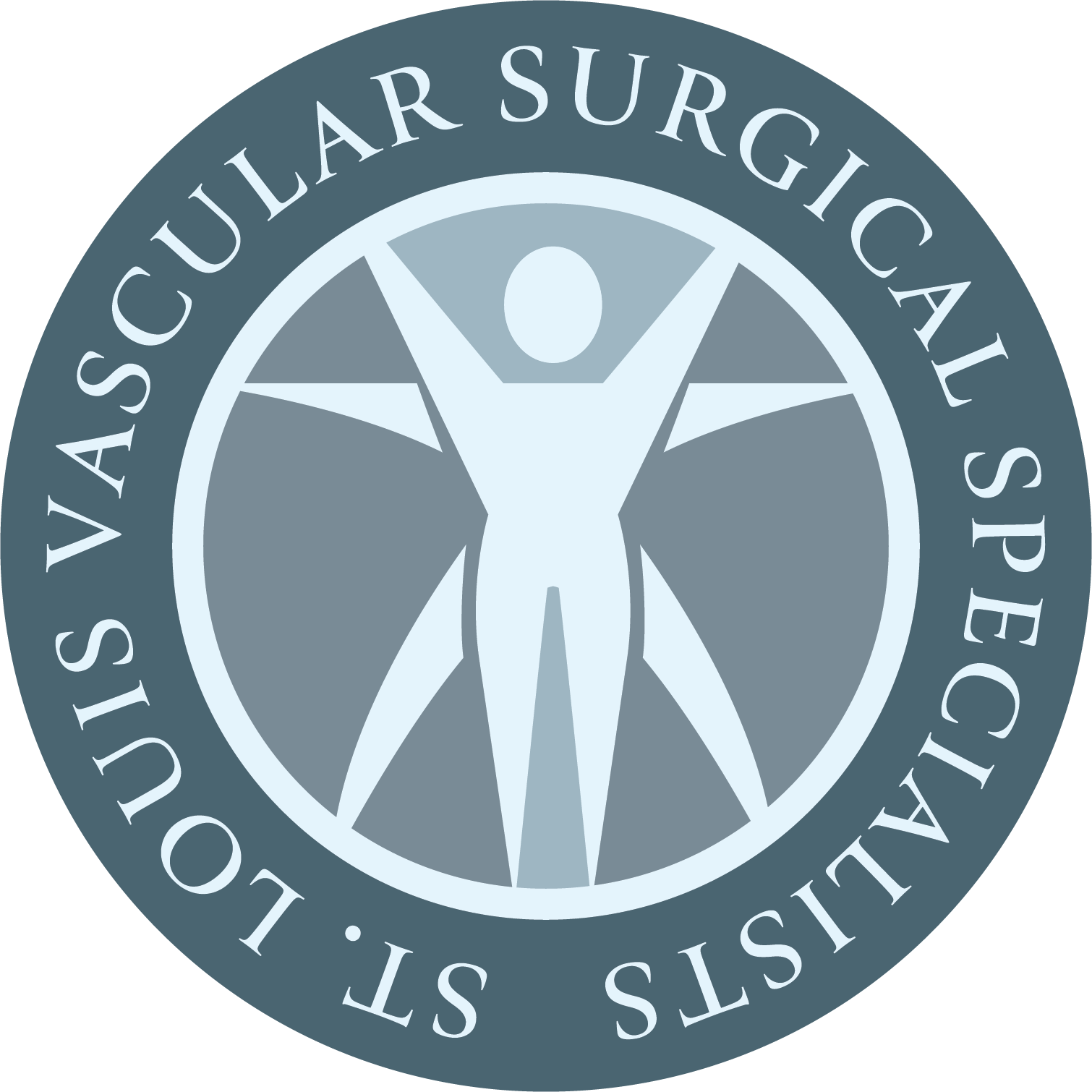Venous diseases are a range of conditions that affect the veins. At St. Louis Vascular Surgical Specialists, under the expert guidance of board-certified surgeon Dr. Hacker, we specialize in diagnosing and treating vein conditions. From varicose veins to deep vein thrombosis, our team offers personalized care to alleviate symptoms and restore vascular health.
Venous diseases: an overview
Veins are blood vessels responsible for returning deoxygenated blood from the body’s tissues to the heart. Unlike arteries, which carry blood from the heart to various parts of the body, veins often work against gravity to move blood from the legs to the heart. They rely on a series of one-way valves to prevent blood from flowing backward. These valves open to allow blood to move toward the heart and close to prevent backflow. Muscle contractions in surrounding tissue also assist in pushing blood through the veins. This intricate system ensures efficient circulation.
Venous diseases arise when the normal functioning of veins is compromised. This can occur due to various factors, including weakened or damaged valves, obstruction of blood flow, or increased pressure within the veins. Varicose veins and chronic venous insufficiency, for instance, occur when the valves weaken or fail, causing blood to pool in the veins. Deep vein thrombosis (DVT) occurs when blood clots form in the deep veins, often in the legs. Identifying the root cause of venous disease is crucial for effective diagnosis and treatment.

Potential symptoms of venous diseases:
- Visible, swollen, and twisted veins, usually in the legs (varicose veins)
- Leg heaviness or fatigue, especially after standing or sitting for long periods
- Swelling in the legs, ankles, or feet
- Skin changes, such as discoloration, thickening, or ulceration
- Pain or discomfort ranging from a dull ache to a sharp throbbing
- Itching or burning sensations around affected veins
- Restless legs syndrome, characterized by an irresistible urge to move the legs
- Formation of blood clots in deep veins (deep vein thrombosis)
- Symptoms of DVT, including leg pain, swelling, warmth, and redness
- Complications such as pulmonary embolism if a blood clot travels to the lungs
- Slow-healing wounds or ulcers on the legs, particularly around the ankles
Examples of common venous diseases
Varicose Veins
Varicose veins are enlarged, twisted veins that often appear blue or dark purple and are commonly found in the legs. They develop when the valves within the veins weaken or fail, causing blood to pool and veins to stretch. This condition can lead to discomfort, swelling, and aching sensations in the legs. Severe cases may require medical intervention.
Chronic Venous Insufficiency (CVI)
Chronic venous insufficiency (CVI) is a condition where the veins in the legs fail to efficiently return blood to the heart. It typically results from damaged or weakened valves within the veins, leading to poor circulation and blood pooling in the lower limbs. Symptoms may include leg swelling, discomfort, heaviness, skin changes, and ulceration.
Superficial Thrombophlebitis
Superficial thrombophlebitis is characterized by inflammation and blood clot formation in a superficial vein, often near the surface of the skin. It manifests as redness, tenderness, warmth, and swelling along the affected vein. While not as serious as deep vein thrombosis, it can lead to complications such as infection or the clot traveling to deeper veins.
Deep Vein Thrombosis (DVT)
Deep vein thrombosis (DVT) is a serious condition characterized by the formation of blood clots within the deep veins, usually in the legs. These clots can obstruct blood flow, causing swelling, pain, warmth, and redness in the affected limb. DVT poses a serious risk of complications, such as pulmonary embolism, where the clot dislodges and travels to the lungs.
May-Thurner Syndrome
Result of your right iliac artery compressing your left iliac vein. It can cause isolated left leg swelling, ulcerations, varicose veins, heavy menstrual periods, painful intercourse and even a left leg deep venous thrombosis. May-Thurner Syndrome often goes underdiagnosed because venous disease is not well treated in the U.S


Pelvic Congestion Syndrome
Cause of chronic pelvic pain due to problems with blood flow in your pelvic veins. Blood will flow backwards and can cause your veins to twist and even swell. Pelvic Congestion Syndrome can cause chronic lower abdominal pain, worse after standing for long periods of time or after sexual intercourse.
Postural Orthostatic Tachycardia Syndrome (POTS)
Postural Orthostatic Tachycardia Syndrome (POTS) is a multifaceted disorder of the autonomic nervous system characterized by a rapid increase in heart rate and symptoms such as dizziness when standing. At St. Louis Vascular Surgical Specialists, under the leadership of board-certified vascular surgeon Dr. Robert Hacker, patients benefit from expert care and tailored treatment plans, supported by advanced diagnostic methods, to effectively manage POTS.


Personalized vein treatment options at SVSS
At St. Louis Vascular Surgical Specialists (SVSS), we understand that each individual’s venous condition is unique and requires tailored treatments. Under the expert care of Dr. Robert Hacker, a board-certified surgeon renowned for his expertise in vascular surgery, you can expect personalized vein treatment options designed to address your specific needs. Dr. Hacker will meet with you personally to thoroughly evaluate your condition, conduct any necessary diagnostic tests, such as ultrasound imaging and venous duplex scans, and pinpoint the underlying causes of your venous diseases. Dr. Hacker will collaborate with you to develop a treatment plan. This may include minimally invasive vein treatments like endovenous laser therapy (EVLT), sclerotherapy, or radiofrequency ablation to address varicose veins and venous insufficiency. The treatment plan may also include sclerotherapy for spider veins, compression stockings, and lifestyle changes.
Schedule your consultation with Dr. Hacker
St. Louis Vascular Surgical Specialists is your premier destination for comprehensive care for venous diseases. Led by Dr. Robert Hacker, a double board-certified general and vascular surgeon, we ensure each patient receives the most effective and least invasive vein treatments available. As a registered physician for vascular interpretation (RPVI), Dr. Hacker ensures precise diagnosis and curates personalized treatment plans to address the root cause of your vein conditions. Schedule your consultation to receive the focused care you deserve.
Schedule a
Consultation
At St. Louis Vascular Surgical Specialists, we are committed to providing accessible, high-quality care. We accept most major insurance plans to help meet your healthcare needs. For questions about coverage or to verify your insurance, please contact our office today.
